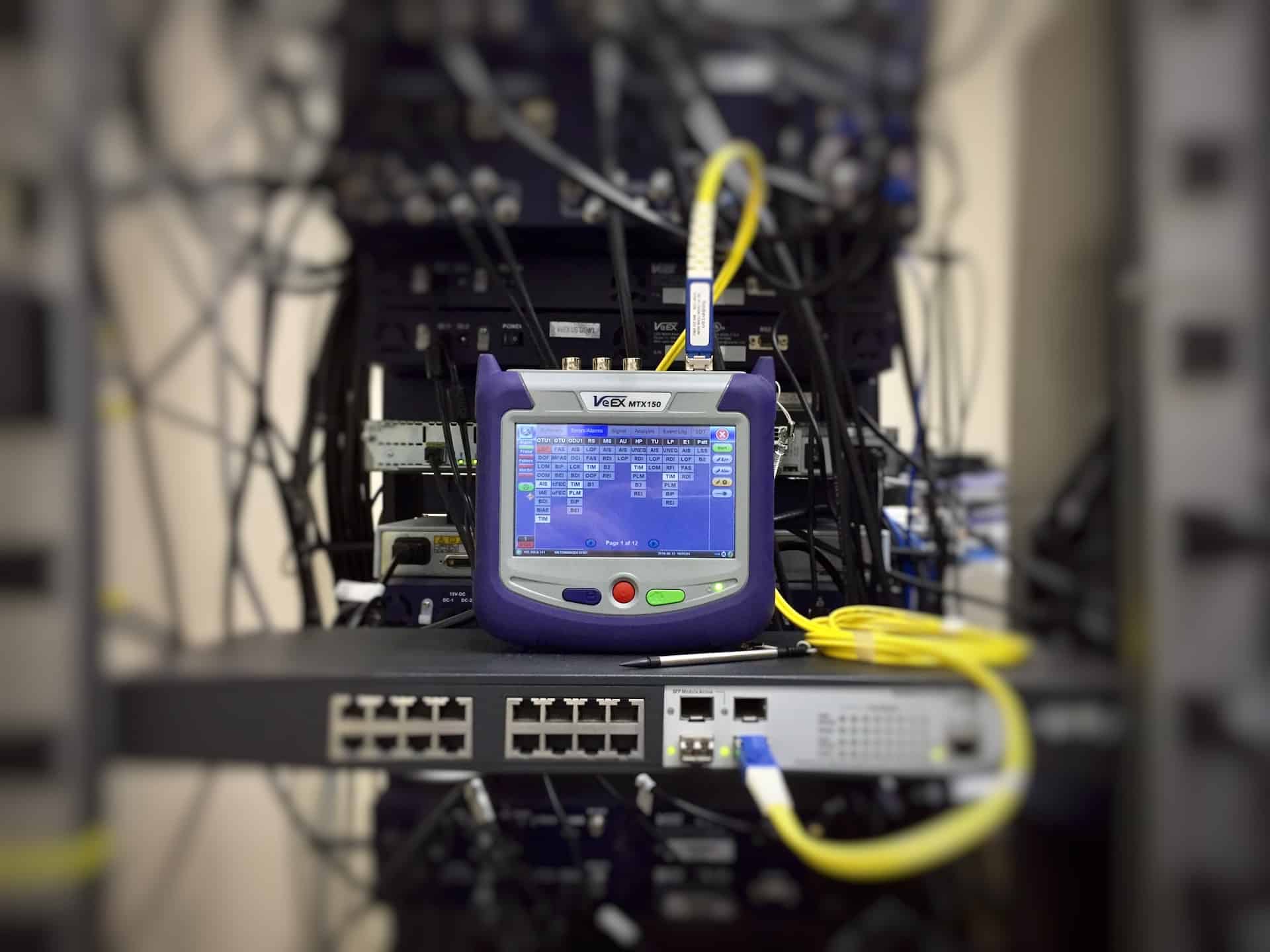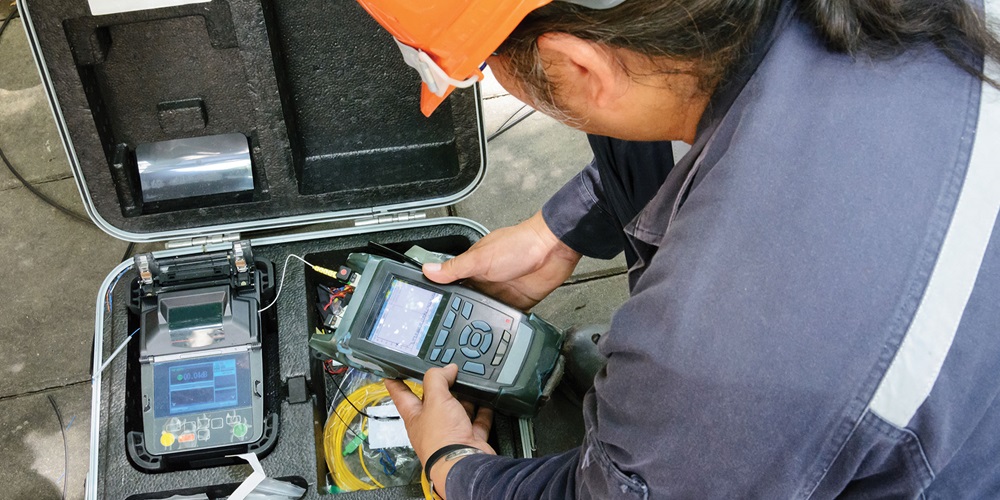Engineers utilize the optical fibre diameter analyser to maintain fibre uniformity.
Engineers utilize the optical fibre diameter analyser to maintain fibre uniformity.
Blog Article
The Function of Optical Fiber Screening in Ensuring Top Quality and Efficiency in Connection Solutions
In today's quickly advancing digital landscape, the relevance of optical fibre screening can not be overemphasized, as it serves as a foundation for ensuring the high quality and efficiency of connectivity services. By employing a range of testing approaches, including OTDR and loss assessments, companies can proactively recognize and minimize possible network concerns that might impede performance. Routine screening not just lines up with market requirements however likewise paves the way for boosted data transmission. As innovation continues to breakthrough, the future of optical fiber testing postures fascinating difficulties and opportunities that warrant closer assessment.
Relevance of Optical Fibre Screening
The significance of optical fiber testing can not be overstated in making certain the stability and efficiency of communication networks. As the foundation of contemporary telecoms, optical fibres assist in high-speed data transmission, making their integrity vital to operational success. Examining acts as an aggressive step to determine potential problems such as signal loss, depletion, and physical damage, which can jeopardize network efficiency.
Normal testing enables the confirmation of setup quality and the discovery of problems that can impact information honesty - optical fibre testing equipment. By employing strenuous testing procedures, network drivers can reduce the risks connected with network failures, consisting of downtime and monetary losses. Furthermore, optical fiber screening guarantees conformity with industry requirements and regulations, boosting the general high quality of solution given to end-users.
Inevitably, the systematic evaluation of optical fibres contributes to the durability and effectiveness of communication systems. It allows stakeholders to make informed decisions regarding upkeep, upgrades, and troubleshooting. In a landscape where data is increasingly crucial, prioritizing optical fibre testing is vital to maintaining robust and effective connectivity services, consequently supporting the demands of modern electronic settings.
Sorts Of Optical Fibre Tests
Various testing techniques are utilized to guarantee the functionality and integrity of optical fibers within communication networks. These tests can be broadly classified into 2 primary types: installment tests and upkeep examinations.
Installation examinations are carried out quickly after the setup of optical fibre wires to confirm their performance and honesty - fibre testing equipment. The most usual setup examinations include Optical Time-Domain Reflectometry (OTDR) examinations, which examine the quality of the fiber by recognizing faults or breaks, and end-to-end loss tests, which gauge the total optical loss from one end of the fibre to the other
Upkeep tests, on the other hand, are executed periodically to make certain continuous performance and detect potential concerns gradually. These consist of visual assessment, which look for physical problems or improper installations, and continuity examinations, which validate that the signal can travel through the fibre without disruption.
Furthermore, progressed tests such as Polarization Setting Dispersion (PMD) and Chromatic Diffusion (CD) examinations can be carried out to evaluate the fibre's efficiency under different problems. By using these diverse screening techniques, specialists can keep high standards of top quality and dependability in optical fibre networks.
Advantages of Regular Examining
Normal testing of optical fibres plays a crucial duty in keeping the total performance and dependability of interaction networks. By performing normal evaluations, organizations can make sure that their fiber optic installments meet industry requirements and operate successfully. This proactive method assists to determine possible weaknesses and degradation gradually, permitting prompt interventions before issues escalate.

Cost-effectiveness is another benefit. By attending to minor concerns early, organizations can avoid the high prices connected with major repair services or system failures. Regular screening also fosters conformity with regulative requirements, making certain that the network follows required safety and efficiency requirements.
Common Problems Identified
Determining common problems in optical fibre networks is necessary for maintaining optimum efficiency and reliability. Different factors can add to disruptions, consisting of physical damages, bad installment methods, and ecological influences.
Physical damages, such as bends, breaks, or abrasions, can considerably degrade signal high quality. Improper setup strategies, including excessive stress or poor protecting of wires, may lead to enhanced depletion and loss of connectivity. Additionally, ecological elements such as temperature variations, wetness ingress, and rodent interference can endanger the honesty of the fiber.
Connector problems also often arise, with incorrect positioning or contamination causing enhanced insertion loss. Furthermore, splicing mistakes can introduce significant signal deterioration if not carried out with accuracy.

Dealing with these common issues via routine optical fibre screening not just improves network reliability yet additionally enhances overall efficiency, making sure that connectivity solutions remain durable and effective.
Future Trends in Examining
As the need for high-speed connectivity proceeds to increase, the future of optical fibre testing will significantly concentrate on automation and advanced analytics. The assimilation of fabricated knowledge (AI) and artificial intelligence (ML) in testing processes will certainly allow much more efficient information analysis and anticipating upkeep, reducing downtime and enhancing overall network integrity. Automated screening services will enhance the assessment and accreditation of fibre networks, lessening human error and enhancing testing throughput.
One more substantial pattern is the adoption of remote screening innovations. As the deployment of fibre networks broadens into remote and underserved areas, remote testing capacities will enable technicians to keep track of and detect network problems without physical presence, thus minimizing functional prices and boosting feedback times.
In addition, there will certainly be a change in the direction of even more comprehensive testing standards that encompass not only typical loss dimensions but also performance metrics such as latency and data transfer use. This all natural technique will help with better network link management and optimization methods.
As these patterns develop, the optical fiber screening landscape will not just improve the high quality and efficiency of connection services but additionally support the growing intricacies of contemporary interaction networks.
Verdict
In conclusion, optical address fibre screening offers as a fundamental element in keeping the integrity and effectiveness of interaction networks. The ongoing commitment to routine screening not just enhances data transmission yet additionally aligns with market criteria, cultivating reliability in network facilities.
Report this page